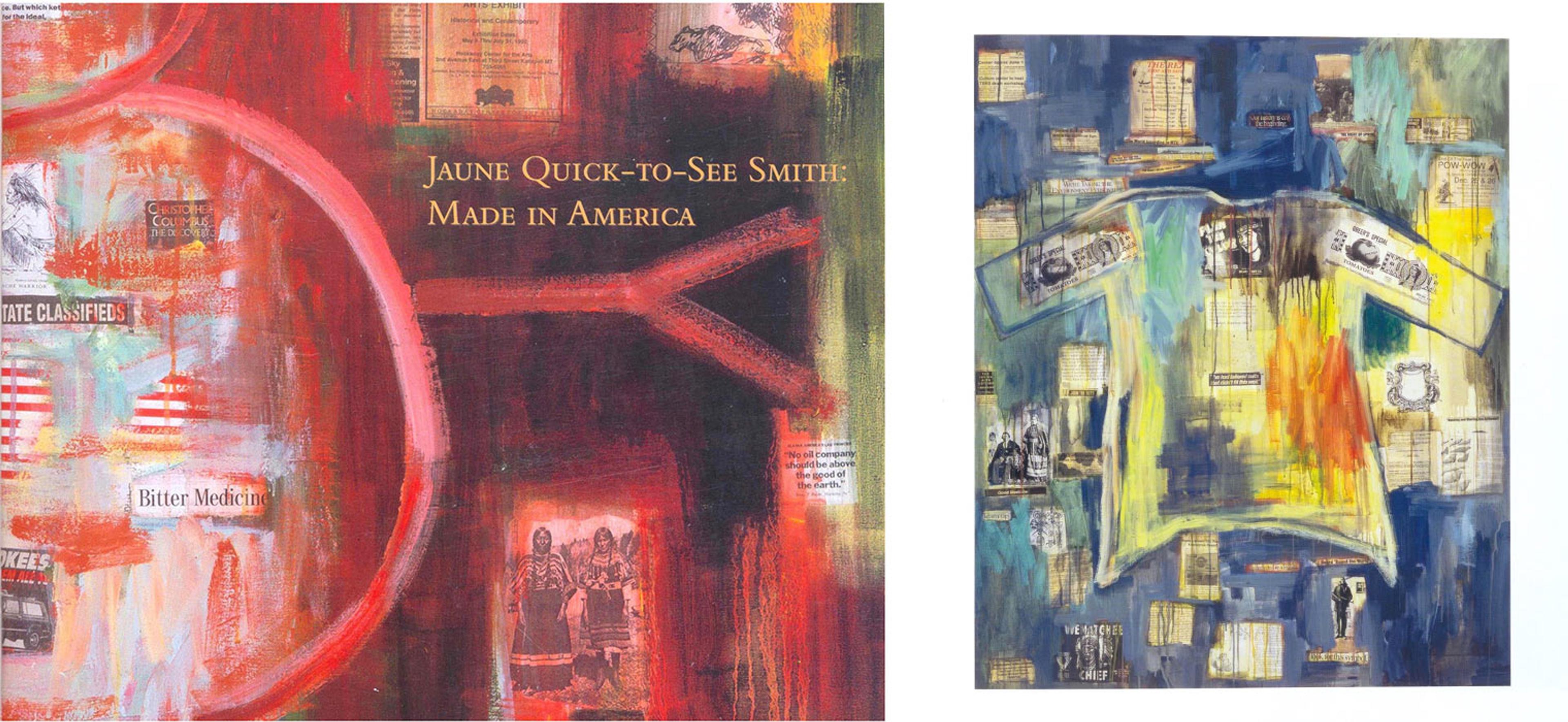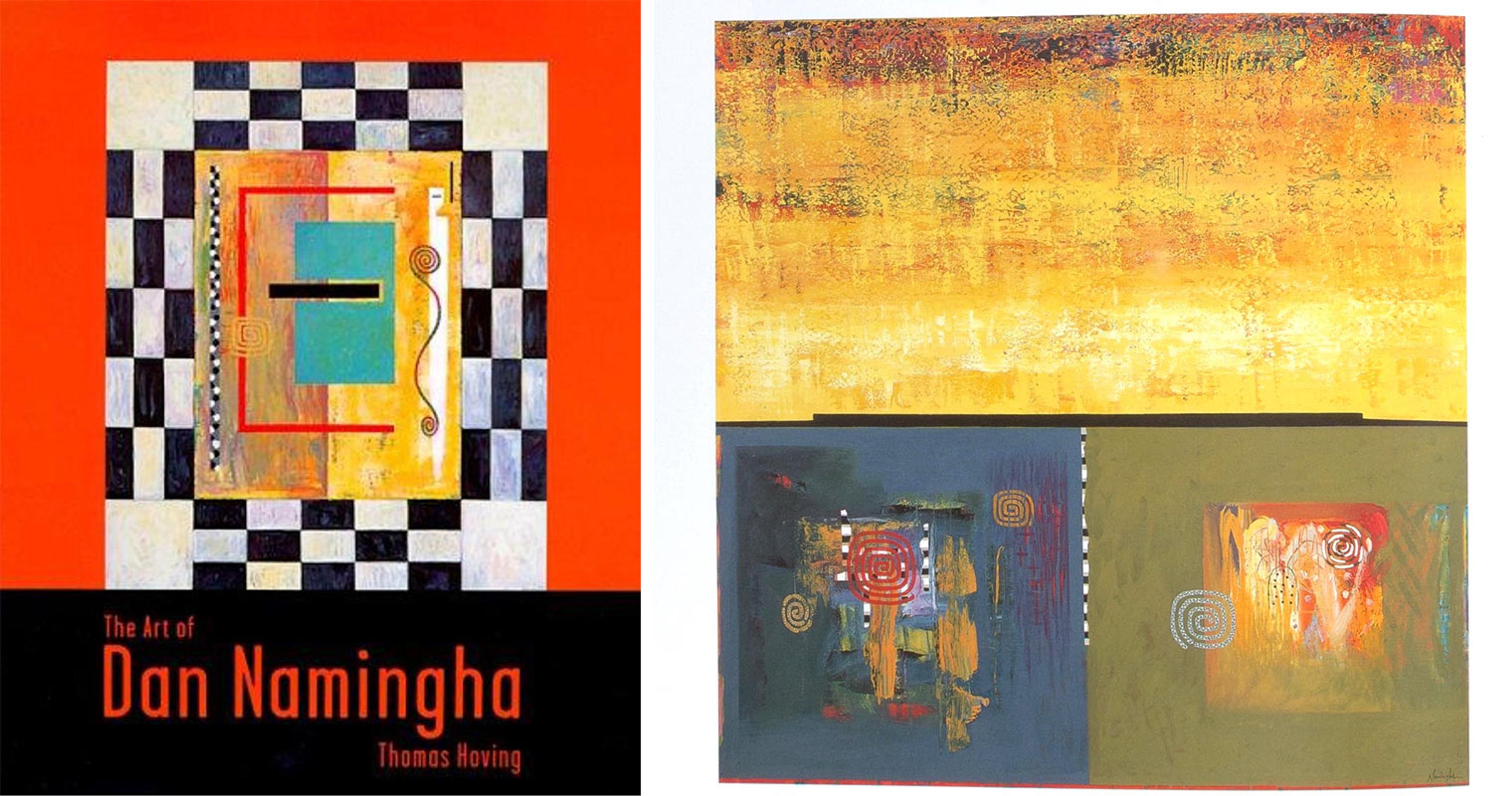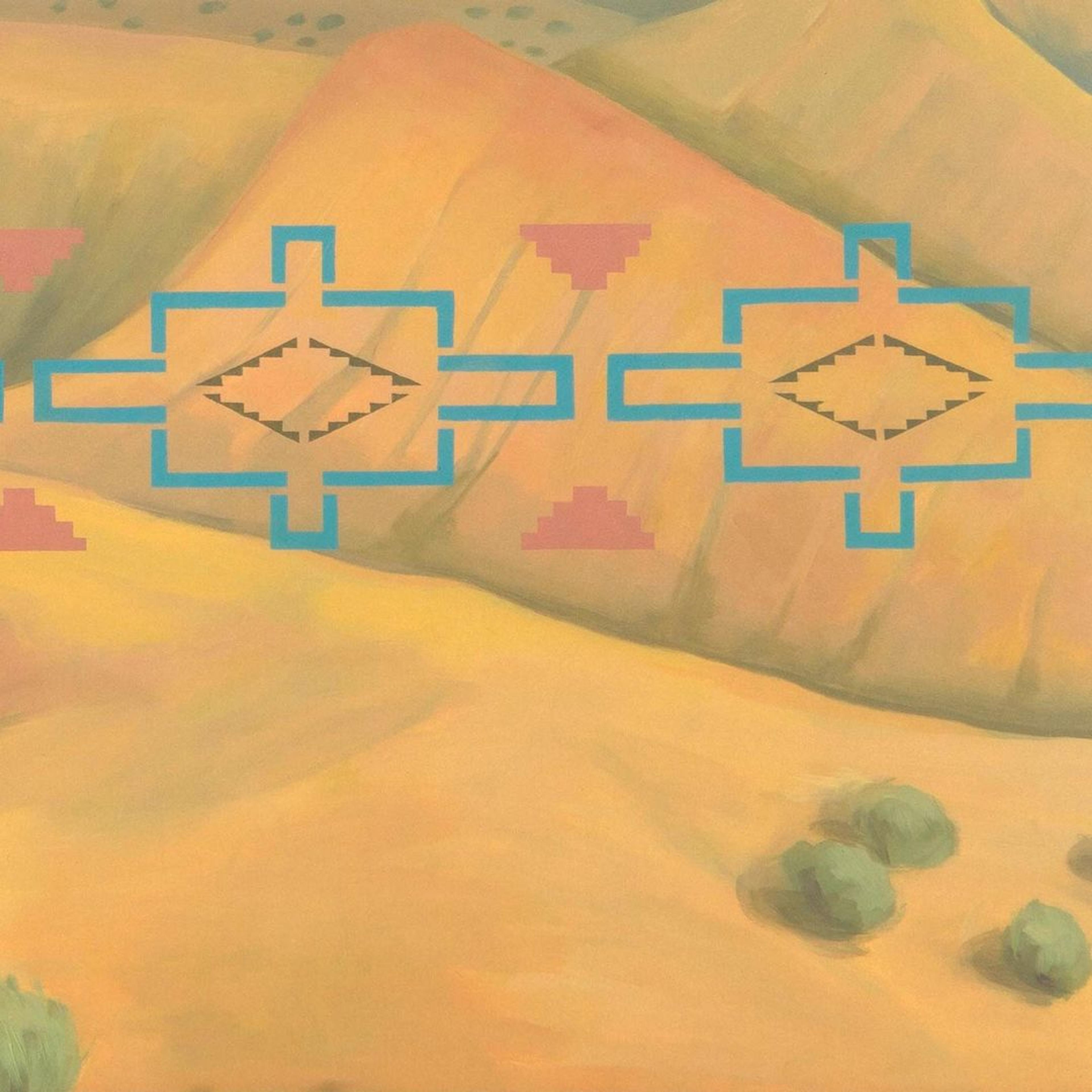In October, Watson Library received a grant from the National Endowment for the Humanities allowing us to advance our goal of assessing, enhancing, and promoting access to the library’s collection of retrospective and current material by and about Indigenous American, Hispanic American/Latinx, and Asian American and Pacific Islander artists.
The titles below represent a selection of our current contemporary material on Native American art from the library’s collection.

Kay WalkingStick, Kay WalkingStick: An American Artist (Washington, D.C.: National Museum of the American Indian, Smithsonian Institution, 2015)
Kay WalkingStick (born 1935) is a citizen of the Cherokee nation of Oklahoma. WalkingStick is a painter who focuses on the American landscape. Her paintings of mountains and the sea are intended to venerate the land and to honor those who first lived on it. The above catalog accompanies WalkingStick’s first major retrospective. It traces her career of over four decades and features more than sixty-five of her paintings, drawings, sculptures, and notebooks, as well as the diptychs for which she is best known, including New Mexico Desert (2011), pictured above as a detail on the cover. Two of her paintings are in The Met’s collection, Genesis/Violent Garden (1981), a painting with vertically incised lines, and Wallowa Mountains Memory, Variation (2004), a diptych landscape.

Jaune Quick-to-See Smith, Jaune Quick-to-See Smith: Made in America (Kansas City, MO: UMKC-Belger Arts Center for Creative Studies, 2003). Left: cover detail; Right: Plate 11, Flathead Warshirt, 1993, mixed media and oil on canvas
Born in 1940 at the St. Ignatius Indian Mission, Jaune Quick-to-See Smith is an enrolled Salish member of the Confederated Salish and Kootenai Nation of the Flathead Reservation. Quick-to-See Smith has been creating abstract paintings and prints since the 1970s. She often incorporates imagery from popular culture conveying socio-political commentary. The Met has two of her works: August Encampment (1988–89), an oil painting, and Into the Future (1995), a three color lithograph with chine collé (a technique used in printmaking processes resulting in a two-layered paper support). This survey catalog accompanies the exhibition held at the Belger Arts Center in Kansas City, Missouri, presenting thirty-six works of her works from 1992 to 2002, including paintings, prints, drawings, and monotypes exploring Native American life and U.S. consumer culture.

T.C. Cannon, T.C. Cannon: At The Edge of America (Salem, Massachusetts: Peabody Essex Museum, 2018). Plate numbers 16 and 12: Waiting for the Bus (Anadarko Princess), N.D., 1982, color lithograph on paper and Self-Portrait in the Studio, 1975, oil on canvas
T.C. Cannon (1946–1978) was an enrolled member of the Kiowa Tribe with Caddo and French ancestry. A multidisciplinary artist working during the turbulent 1960s and 1970s, Cannon was featured with fellow artist Fritz Scholder (1937–2005) in the Smithsonian Institution's National Collection of Fine Arts 1972 exhibition, Two American Painters. In this transformative exhibition, Cannon and Scholder overturned visual stereotypes about Native Americans exploring irony and kitsch to convey socio-political messages. The catalog above is part of a recent travelling exhibition organized by the Peabody Essex Museum in Salem, Massachusetts which then went on to the Smithsonian National Museum of the American Indian in New York and the Gilcrease Museum in Tulsa, Oklahoma. It includes over eighty of Cannon’s paintings, prints, and drawings alongside his poems and song lyrics, as well as newly published personal ephemera, photographs, and handwritten and typed manuscript pages.

Thomas Hoving, The Art of Dan Namingha (New York: H.N. Abrams, 2000). Right: Plate 78, Hekytwi Sunrise, 1996, mixed media on canvas
Painter and sculptor Dan Namingha was born in 1950 in Keams Canyon, Arizona, and is a member of the Hopi-Tewa tribe. His great-great-grandmother was the legendary Hopi potter Nampeyo (1859–1942) who helped revive the Hopi art of basketry. Numerous other family members—close to fifteen generations—were also accomplished artists creating traditional and innovative art including pottery, Kachina dolls, paintings, and graphic works. Namingha combines pictograms symbolizing his Indigenous heritage with the tradition of twentieth-century abstraction. The Met’s seventh Director, Thomas Hoving (1931–2009), is the author of this comprehensive biography and study of Naminha’s work, which reproduces seventy-four color illustrations of his paintings and bronze sculptures inspired by the landscape and cultural symbols of the Colorado Plateau.

Valerie K. Verzuh, Indian Country: the Art of David Bradley (Santa Fe: Museum of New Mexico Press, 2014). Right: Plate 20, True Grit # 2, 2008, acrylic on canvas
David Bradley was born in Eureka, California in 1954 and grew up near Minneapolis on the White Earth Ojibwa Reservation in Chippewa, Minnesota. Bradley’s works have a unique narrative folk style and often convey a political message. He incorporates Native and Western art histories, pop culture icons, U.S. commercialism, and stereotypes into his work, as seen in his painting on the cover of the above survey catalog, Indian Country, where Miss Indian U.S.A. stands in for the Mona Lisa. This comprehensive review of Bradley’s oeuvre includes his printmaking, sculpture, and mixed-media works which question the Native American experience as represented by commercial clichés versus lived reality.

Clockwise from left to right: Gaylord Torrence, Art of Native America: the Charles and Valerie Diker Collection (New York: The Metropolitan Museum of Art, [2018]); Hearts of our People: Native Women Artists (Minneapolis, Minnesota: Minneapolis Institute of Art in association with the University of Washington Press, 2019); Art of the North American Indians: The Thaw Collection at the Fenimore Art Museum (Cooperstown, New York: Fenimore Art Museum, 2016); David W. Penney, Art of the American Indian frontier: The Chandler-Pohrt Collection (Detroit: Detroit Institute of Arts; Seattle: University of Washington Press, 1992); Karen Kramer Russell, Shapeshifting: Transformations in Native American Art (New Haven, Conn.; London: Yale University Press, 2012); Arts of Diplomacy: Lewis and Clark's Indian Collection (Cambridge, Mass.: Peabody Museum of Archaeology and Ethnology; Seattle; University of Washington Press, 2003); Plains Indian Drawings, 1865-1935: Pages from a Visual History (New York: Harry N. Abrams in association with the American Federation of Arts and the Drawing Center, 1996)
In addition to artist monographs, Watson Library’s holdings include exhibition and collection catalogs, a variety of which are shown above. At upper left, The Met’s Art of Native America: The Charles and Valerie Diker Collection presents the work of more than fifty Indigenous groups from the Museum’s landmark gift. Hearts of Our People: Native Women Artists, at center, is the catalog of an exhibition organized by the Minneapolis Institute of Art that recognized the ingenuity and innovation of Native American women artists including Osage/Muscogee ceramic and textile artist Anita Fields (born 1951), Navajo ceramic artist Christine McHorse (1948–2021), and Hopi multidisciplinary artist Ramona Sakiestewa (born 1948).
All of these publications are available through our online catalog Watsonline to view in the library. We look forward to your visit.
Special thanks to Becca Gates, the Adrienne Arsht intern in Thomas J. Watson Library, for her research.
